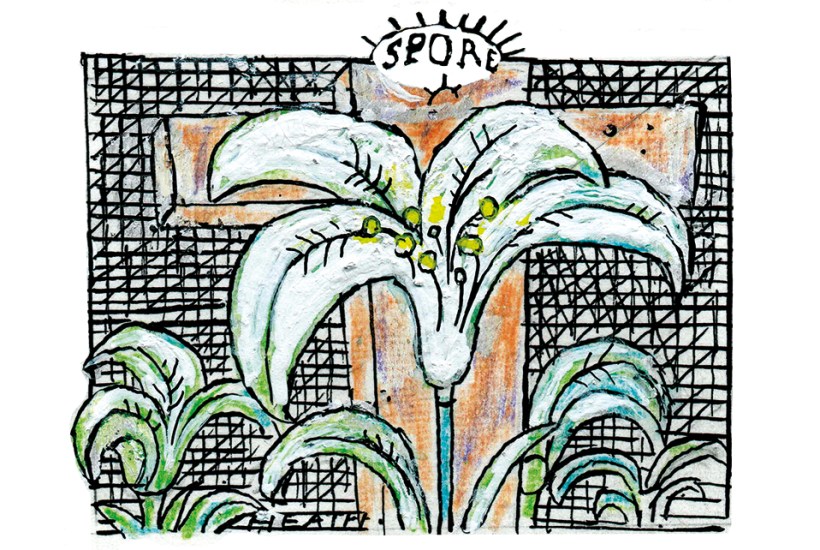The Easter lily, or Lilium longiflorum, grows from a bulb buried underground to bear white, trumpeting flowers which face outwards and smell divine. One doesn’t need to be an expert in semiotics to see why it came to be associated with the resurrection. In Christian tradition, lilies were said to have grown in the garden of Gethsemane at the spot where Jesus prayed on the eve of his crucifixion. The Easter lily is sometimes known as ‘the white-robed apostle of hope’.
A few stems of lilies tied with ribbon are always a lovely present whatever the occasion, but it is true that some associate these flowers more with death than life. In depictions of the Annunciation, the angel Gabriel sometimes arrives clutching a spray of lilies. Did the Virgin Mary flinch slightly when her bouquet was delivered, laden with meaning?
The fleur-de-lis, a stylised depiction of a lily, became the official emblem of Florence in the 11th century. In Italian cities, as in much of medieval Europe, the new year used to be celebrated on 25 March, the feast day of the Annunciation, nine months before Christmas. Also known as ‘Lady Day’, unlike Easter, it was fixed in the calendar. In Britain, the new year began on 25 March until 1752, when our calendar changed from the Julian to the Gregorian and the dates were adjusted so that the new new year started on 5 April, which became an important feast day for accountants and tax lawyers.
Irish Republicans wear the Easter lily badge in memory of those who died during the 1916 Easter Rising. The emblem was introduced in 1926 by Cumann na mBan, the ‘League of Women’, and badges were sold outside church gates on Easter Sunday. Despite being known as the Easter lily, the lily depicted is in fact the Calla lily, more tubular in shape, rather than the traditional trumpet-shaped longiflorum.
The Easter lily itself originally hails from Taiwan and the Ryukyu Islands in southern Japan, and for much of the 19th century, lily production was based in Japan. When Pearl Harbor was attacked in 1941, the supply of bulbs from Japan stopped and Easter lilies became far more expensive to source in America. The market soon adjusted, with production shifting to a small area on the Oregon-California border, now known as the Easter lily capital of the world. Almost 95 per cent of the world’s Easter lilies are still grown in this region, with five farms owned by four families producing 14 million a year. Locals refer to the flower as ‘white gold’.
Enthusiasts buy their potted Easter lilies early, ideally on the Monday of Easter week to give the flowers time to open. Pollen is hell to get out of clothes so it’s sensible to remove the stamens as soon as they are visible. If pollen does brush against clothes, do not try to use water to remove the yellow dust. It will only set the stain. Instead, use a piece of Sellotape to lift it off.
Some churches will ask for donations for Easter lilies in memoriam of loved ones. These then form part of the floral display for the week’s services. Potted Easter lilies can be replanted for the following year, which continues the theme of resurrection. But if cut lilies are past their best, there is nothing to be done but recognise the fact that death follows life. As Shakespeare wrote: ‘For sweetest things turn sourest by their deeds; Lilies that fester smell far worse than weeds.’
Got something to add? Join the discussion and comment below.
Get 10 issues for just $10
Subscribe to The Spectator Australia today for the next 10 magazine issues, plus full online access, for just $10.
You might disagree with half of it, but you’ll enjoy reading all of it. Try your first month for free, then just $2 a week for the remainder of your first year.









Comments
Don't miss out
Join the conversation with other Spectator Australia readers. Subscribe to leave a comment.
SUBSCRIBEAlready a subscriber? Log in